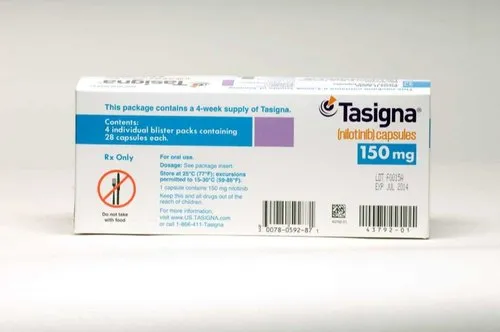Tasigna: Key Facts You Should Know

Tasigna, referred to conventionally as nilotinib, is a physician-endorsed drug used to treat particular sorts of leukemia, a disease of the platelets. In particular, Tasigna is endorsed for the therapy of Philadelphia chromosome-positive persistent myeloid leukemia (Ph+ CML) in both recently analyzed patients and people who have recently been treated with different drugs. As a strong tyrosine kinase inhibitor (TKI), Tasigna assumes an urgent part in overseeing CML by focusing on the particular proteins that drive the development of malignant growth cells. This article will cover the fundamental realities of Tasigna, including how it works, its advantages, expected secondary effects, and significant contemplations for patients.
How Tasigna Functions
Tasigna has a place with a class of medications known as tyrosine kinase inhibitors. Tyrosine kinases are compounds that go about as synthetic couriers, conveying messages inside cells that advance development and division. In specific tumors like CML, the BCR-ABL protein, a strange tyrosine kinase, is overactive and prompts the uncontrolled development of white platelets. Tasigna explicitly targets and represses the BCR-ABL protein, in this manner keeping the malignant growth cells from developing and duplicating. By impeding this protein, Tasigna assists with lessening the number of leukemia cells in the blood and bone marrow, possibly prompting reduction.
Who Can Take Tasigna?
Tasigna is endorsed for grown-ups with Philadelphia chromosome-positive constant myeloid leukemia (Ph+ CML) in the ongoing stage or in the sped-up stage when different medicines have not worked or caused unsatisfactory side impacts. The Philadelphia chromosome is a hereditary irregularity found in certain individuals with CML, which prompts the development of the BCR-ABL protein designated by Tasigna.
Tasigna is additionally supported for use in recently determined patients to have Ph+ CML in the ongoing stage. It offers a treatment choice that can be more compelling than prior treatments, especially for patients who can’t endure other tyrosine kinase inhibitors like imatinib (Gleevec).
Measurement and Organization
Tasigna is taken orally, normally as cases. The standard measurement is 300 mg two times every day, around 12 hours separated. It’s critical to take Tasigna while starving — no less than two hours after eating and somewhere around one hour before the following feast to guarantee legitimate retention and viability.
Patients ought to adhere to their primary care physician’s guidelines intently for dosing and planning. Skipping dosages or taking more than recommended can influence the medication’s viability and increment the gamble of incidental effects.
Possible Secondary effects
Like all drugs, Tasigna accompanies a gamble of incidental effects. A few normal secondary effects include:
- luences the heart’s musicality.Sickness and heaving: These are the most well-known gastrointestinal incidental effects, which can frequently be dealt with hostile to queasiness meds.
- Exhaustion: Patients might feel uncommonly drained or frail.
- Rash: Skin responses, including rashes, are somewhat normal and can differ in seriousness.
- Migraine: Gentle to direct cerebral pains might happen during treatment.
- Blockage or loose bowels: Stomach-related issues like clogging or runs might influence a few patients.
- While these aftereffects are for the most part reasonable, Tasigna can likewise cause more serious incidental effects that require prompt clinical consideration, for example,
- Cardiovascular Issues: Tasigna has been related to an expanded gamble of cardiovascular issues, including coronary failures, strokes,
Significant Contemplations
Before beginning Tasigna, it’s significant to examine your full clinical history with your primary care physician, if you’re taking to incorporate some other prescriptions. Certain medications can cooperate with Tasigna, expanding the gamble of aftereffects or diminishing its viability.
Patients with a background marked by coronary illness, liver issues, or pancreatitis ought to be firmly observed during treatment. Furthermore, pregnant or breastfeeding ladies shouldn’t accept Tasigna, as it can hurt the baby or newborn child.
It’s likewise critical to try not to drink grapefruit or grapefruit juice while taking Tasigna, as it can slow down how the medication is processed, prompting possibly perilous levels in the blood.
Last thought
Tasigna is a strong therapy choice for patients with Philadelphia chromosome-positive constant myeloid leukemia. By focusing on the particular proteins that drive disease cell development, Tasigna can successfully oversee CML and work on the personal satisfaction of some patients. Notwithstanding, similar to all meds, it accompanies dangers and aftereffects that should be painstakingly made due. Patients ought to work intimately with their medical care suppliers to guarantee that Tasigna is the best decision for themselves and to screen their well-being all through therapy.





